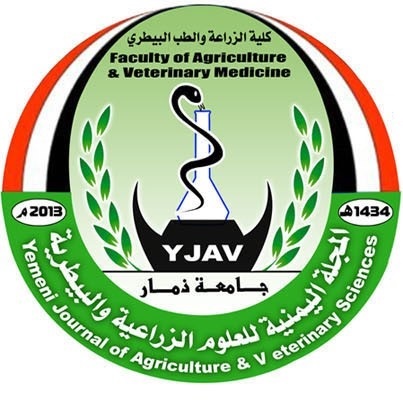Echinococcus granulosus in human and cattle: an epidemiology and economic losses of condemned organs
الكلمات المفتاحية:
Cattle، Dhamar، E. granulosus، Human، Yemenالملخص
The study was conducted between 2016 and 2019, on epidemiology of E. granulosus infection (cystic echinococcosis) in humans and cattle and it`s economics’ losses on condemned organs at Dhamar city. In human, a retrospective study was conducted by reviewing the records of patients hospitalized in government and private hospitals, out of 323 records reviewed, 46 (14.24. %) cases were found positive. The higher infection rate of Echinococcosis granulosus infection was recorded in liver (13.93%); whereas, the lower in lung (0.31%). The infection was more among female patients (8.05%) compared to male (6.19%) and age group of 30-35 years old (5.88%). The higher prevalence rates recorded were 9.91%,2.17%, 6.5% and 9.29% in rural, month of January, Dhamar General Hospital Authority(DGHA) and Ultrasound technique respectively. Significant differences (P<0.05) were observed between the infection rate and age and diagnostic techniques used; whereas none with other factors investigated. In animals, using prospective study. Out of the 323 cattle examined by postmortem inspection and serodiagnosis tests, 40 (12.38%) were found positive for E. granulosus infection. The distribution of different cysts in different organs were 4.64%, 4.04% and 3.72 in liver, lungs and mixed infection respectively. Significant differences (P<0.05) were observed in distribution of hydatid cysts in different organs of animal. Fertility and viability tests revealed that, 63(44.68%) were fertile, 64 (45.39%) sterile, and 14(9.93%) calcified cysts. There were significant differences (P<0.05) in fertility of cysts of different organs (P<0.05). The cysts of lung origin were highly fertile. The higher prevalence rates were recorded in age groups of 5 ≥ years old (16%), Females (9.29%), Month of January (1.55%) and Post mortem examination (8.98%). Significant differences (P<0.05) were observed between prevalence rate of infection and all variables investigated with exception sex variable. The total economic losses due to organ condemnation and meat production in cattle slaughtered at Dhamar municipal abattoir is estimated as 2727387.52 YR ($ US 7.312.03). In conclusion, E. granulosus infection is prevalent in study areas and represent an important health problem for human and cattle, which requires appropriate strategies for its control.
التنزيلات
التنزيلات
منشور
كيفية الاقتباس
إصدار
القسم
الرخصة
الحقوق الفكرية (c) 2024 المـجلة اليمنية للعلوم الزراعية والبيطرية

هذا العمل مرخص بموجب Creative Commons Attribution-NonCommercial 4.0 International License.


